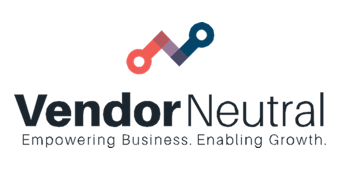How to Dramatically Impact Your Sales Technology ROI
The issue with the measurement of tech stacks is similar to the one Twitter faced in the early days. The ROI was too soft, too speculative. How do advertisers measure the engagement and lift of “social media” tweets? The reach of impressions – likes, Retweets, etc.? It sounds pretty crazy now because we take social for granted in a sense.
But back then marketers were legitimately asking themselves, “what’s the actually tangible ROI here?” That goes for all social media in the early days
Sales Technology ROI
With Sales Technology today, there are too many soft metrics and not enough hard dollars returned on the investment baked into the equation.
Have we reached our “peak tech stacks” moment in 2020? One could argue, the situation is only going to get more intense as the tools matrix explodes from 500+ to over 5,000 vendors and billions of dollars are poured in. According to Netskope, the enterprise has 91 vendors in the stack on average.
Sales, Marketing, and Operations Leaders are scrambling, scratching their heads to ask existential ROI questions like:
- What is the value of my sales engagement platform (SEP)?
- What is the return on investment of my CRM system?
- How do we measure the impact of Conversation Intelligence?
- What’s my cost per lead if I buy this data platform? Do I need multiple? What’s the accuracy?
- OK, should I pay for social media platforms, the B2B pro edition, the premium edition, so many levels to invest in – individual license we expense or for our entire sales team?
Running a modern sales and marketing engine is rife with confusion and it’s tough, really tough, to measure the feedback loops to extract true ROI from your stack.
Management guru Peter F. Drucker intoned, “What gets measured gets managed — even when it’s pointless to measure and manage it, and even if it harms the purpose of the organization to do so.”
To his point, sometimes measuring for ROI is simply not done because it might expose a profligate tech stack collector culture where leaders are simply stamp collecting the latest bright shiny object. I’m sorry but a bigger, better mousetrap will not help you generate greater ROI.
"Running a modern sales and marketing engine is rife with confusion and it’s tough, really tough, to measure the feedback loops to extract true ROI from your stack."
Alan Treffler of Pega humorously but presciently calls this phenomenon a “Frankenstack.” When you accrue technical debt by collecting disparate systems that live in a silo, you ironically actually prevent innovation as you try to buy your way into it.
Jill Rowley of Eloqua fame posits, “A fool with a tool is still a fool.” So how can we get smarter and garner the promised ROI of “curve-jumping, paradigm-shifting, next-generation” technology stacks?
Step one is a multi-touch attribution waterfall.
You need a system that ties sales to marketing and MQLs to SALs to closed-won for full-funnel visibility. Understand every single interaction with the prospect and your organization from inbound leads, to online events, tradeshows and sales interactions.
Step two is to get really good at custom tagging your lead flows in CRM.
Let me give you a concrete example. Let’s say you invest in a social selling platform. Every lead that’s generated simply tag it “Nav” for example. Then when you’re doing a pipeline review you and see the revenue attributed to the new channel.
Step three is to seek out converged systems.
Lowering total cost of ownership (TCO) is a rock-solid way to improve ROI. There is just so much redundancy.
If you are able to measure the down funnel outcomes of the tech stacks that touch the ultimate revenue generation to the business, it’s a good start. If you are able to consolidate the tech stacks to eliminate overlap and redundancy, it will improve the margin.
Think about systems that are manual, semi-automated, and fully automated. Can you really fully leverage the tech being offered to scale at the speed you need? A great example would be a dialer, power dialer or parallel assisted dialer. You’re talking about the difference between 1.5X and 5X efficiency to step into one of these. If you can dial 10 phone numbers at once as compared to one by one, what kind of pipeline would this
"Some companies have so many vendors in the stack, they’re not even sure who’s using what and solutions are even being auto-renewed by procurement."
The last recommendation is to never rest on your laurels with systems. Hold bake-offs. Vendors will not like to hear me say this but keep an eye out for cutting edge technology that deploys artificial intelligence and machine learning in novel ways. Only by disrupting ourselves can we fully transform the modern enterprise.
Artificial intelligence can augment the output of one manual process. Machine learning can be used to systematically crunch big data sets and surface very precise insight. What you should be seeking is augmented intelligence, the ability to help your team make better decisions, decisions only a machine-learning algorithm could surface.
- Can the technology take a sales team of 10 and make them as productive as 100?
- Can the technology uncover new angles on old problems that a human mind would miss?
- Can you predict what will happen or at least directionally?
- Can the system paint a complete picture of your data and the customer journey?
For those reading this who have grown comfortable, even complacent with their mega stack, I want to challenge you to disrupt yourself. Chances are you’re probably in an endless evaluation of vendors. Even be willing to spend more on better-converged tech to ensure you are truly getting the ROI that you seek.
You would be amazed how few organizations have a full picture of their marketing attribution. Some companies have so many vendors in the stack, they’re not even sure who’s using what and solutions are even being auto-renewed by procurement.
Step 1: Catalog the exact stack that you’re using and interview your team about what the “jobs to be done” are. Get crystal clear on the use case. Are there gaps or redundancies?
Step 2: Bring all the stakeholders together using the 91 vendors and get all the solutions on a whiteboard, categorize them by the family of solution.
Step 3: Build out a loose ROI on how the solutions fit together to drive specific outcomes. If you have an analyst on your team that specializes in this build a more granular one.
Step 4: Make some hard decisions on who to cut and where to double down your investment. Maybe you have really strong automation but your data is error-prone so you bring in a secondary data source to enrich the first one. Perhaps your forecasting capabilities are weak with an add-on to the current vendor so a specialized Forecasting module or solution would give you more firepower to predict the funnel.
ROI is obvious on its face. You’re either going to invest more or less in the full stack, pruning back and consolidating or bolstering specific point solutions. You’re going to need some system to tie the stack together so you can directly measure your monthly SaaS spend against the Revenue outcomes and KPIs you seek.
Where it’s nuanced and difficult is it’s myopic to think that slashing vendors is an automatic shoo-in for ROI. There’s often a big gap with bolt-ons or upsold features in bigger marketing, sales, or operational stacks. You don’t want to be a penny-wise and a pound foolish. Cut the ones that no one logs into? But what if they should be logging into it and that’s the issue with the ROI. You can’t go wrong if you assess, measure, evaluate, and execute on a strategy to optimize your stack while adding firepower.
Think MacGyver, then think Tony Stark.

Justin Michael, aka the Tony Stark of XDRs
is Vendor Neutral’s Futurist and author of “Tech-Powered Sales” releasing on HarperCollins in 2021. After two decades of consulting 100+ early-stage startups on hypergrowth and holding leadership roles at LinkedIn, Salesforce, and reporting to Sean Parker, Justin was part of a stealth project where engineers built an AI model of his brain while prospecting with the goal of fully automating sales development itself. He is passionate about AI, ML, NLP, Deep Learning AI, and Neural Network evolution in order to bridge toward the Singularity. His writing seeks to unlock all the ways Marketing and Sales leaders can apply these mechanics to free up the human in the sales process, restoring quality consultative exchanges that drive value.


